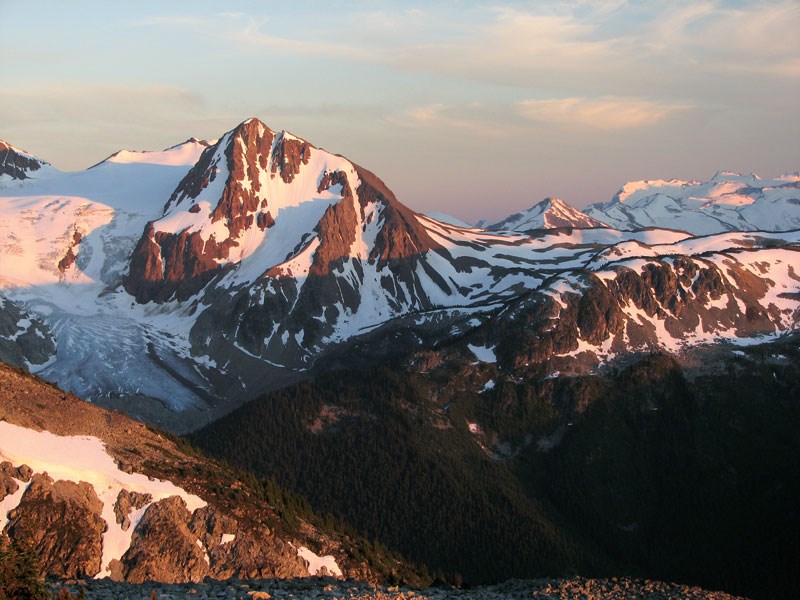Whistler and North Shore search-and-rescue crews joined forces last night in a rare midnight-hour helicopter mission to extract two skiers stranded by an avalanche on Fissile Mountain.
Whistler Search and Rescue (WSAR) said in an incident report that crews were alerted at 6:15 p.m. Wednesday, March 10 of an apparent Size 3 slide that had trapped two ski tourers on the fragile, bed surface of the slide. “The concern was that the remaining [30-centimetre] snowpack would continue to step down around the pair on the very steep, exposed southwest slope,” the organization said.
Adding to the concern was the skiers’ lack of preparedness to spend the night in the elements, WSAR said. After consulting with WSAR avalanche technicians, the pair “eventually inched their way back up onto the established route and relative safety,” the release continued.
With a plan to fly at first light to extricate the pair, the skiers were coached to dig a snow cave and bundle up to spend the night out. However, at 9:20 p.m., the skiers texted volunteer crews to say they were in the process of building a shelter but were experiencing cold chills and requested an imminent rescue.
Faced with -12-degree-Celsius temperatures and 20-kilometre-an-hour winds, “SAR managers had to make a difficult decision,” WSAR went on. “The risks of balancing a ground rescue effort and placing the rescue party on the same slopes against the current safety and situation of the subjects was a resolution that needed to be weighed very carefully.”
After connecting with NSR and Talon Helicopters, a plan was formulated to send a helicopter to the scene in order to lower overnight kits to the stranded party. However, an assessment of the scene determined a helicopter landing was possible nearby, so, armed with a night-vision imaging system NSR had been piloting recently, the decision was made to rescue the skiers and transport them to Whistler’s Municipal Heliport. The operation ended successfully around 12:30 a.m.
“Whistler SAR would like to thank NSR for their careful consideration in this matter,” WSAR said. “This type of rescue is not unlike other SAR operations in which there exists an inherent element of risk. The volunteer SAR community will continue to explore and develop tools that seek to mitigate these risks and that is the lens through which [night-vision imaging system] rescue should be viewed. Recreationalists should not be interpreting this as a solution to poor planning. The conditions for this type of operation were almost perfect and clear starry nights are not a common commodity in the Coast Mountains.”
It was a busy night for North Shore search crews, who also attended a call in the area of Suicide Gully near Mount Seymour to rescue a man and woman skier in their thirties earlier in the evening.
Avalanche Canada’s public bulletin for March 10 advises people to avoid freshly loaded wind features, especially near ridge crests, rollovers and in steep terrain. “Backcountry skiers are reminded again of the importance of reading and understanding the entire bulletin and not just the general hazard rating,” WSAR noted.




